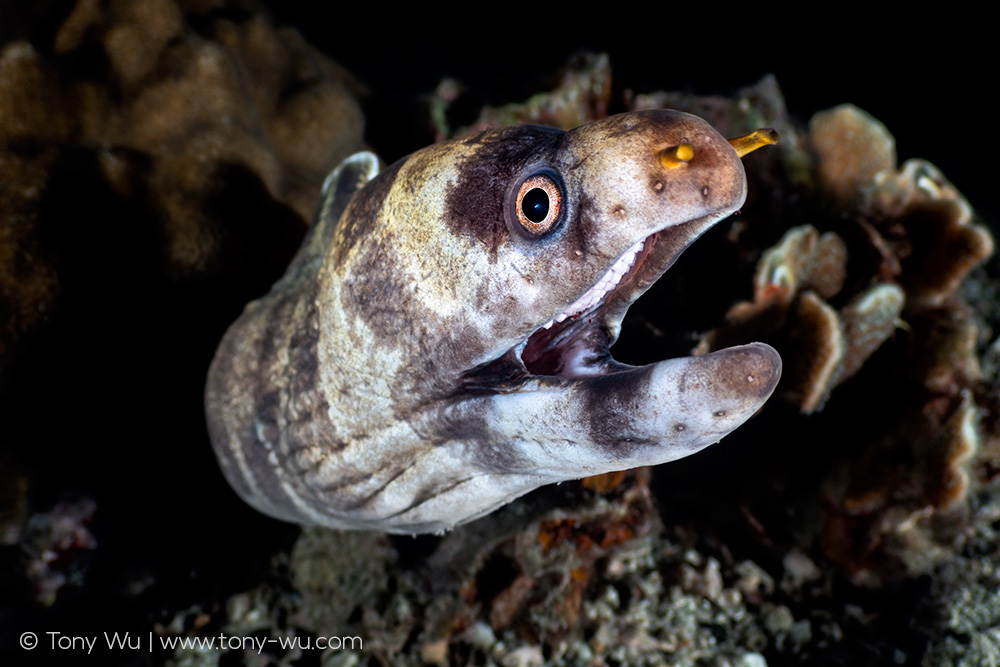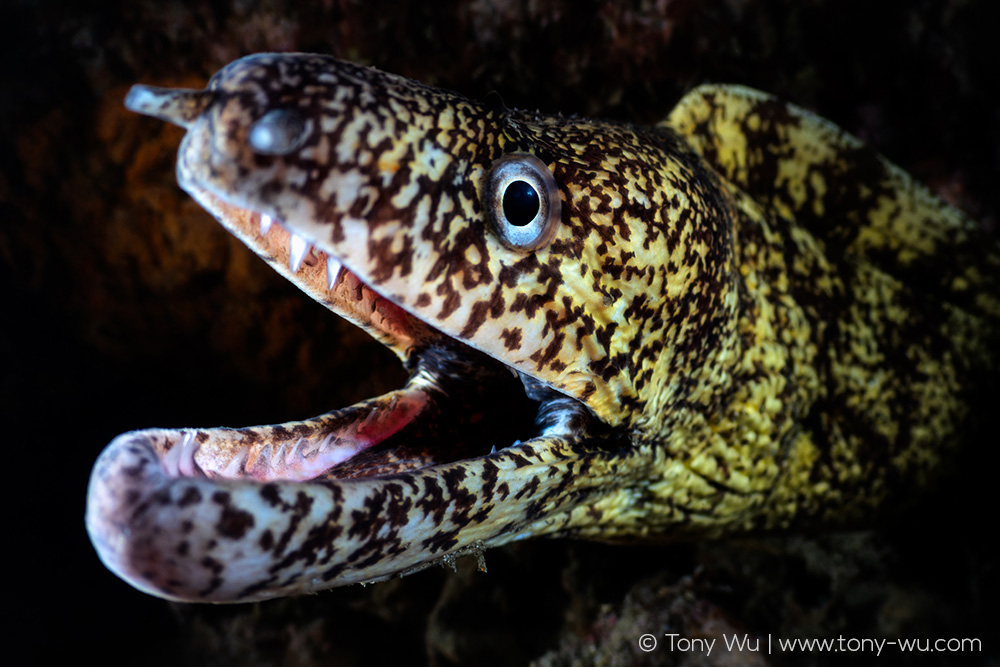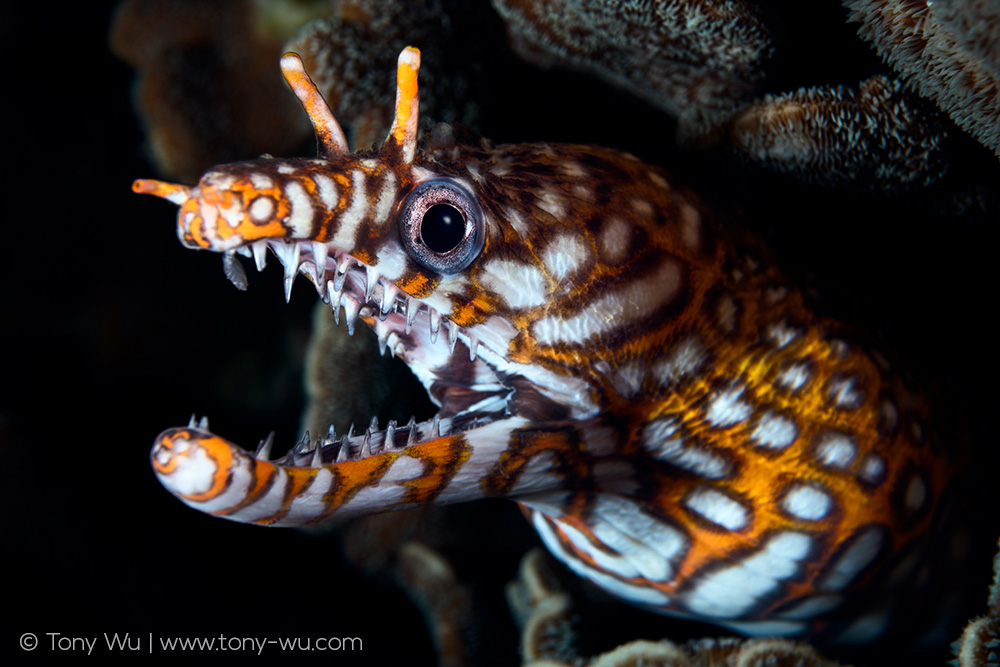There is a saying in biology—form follows function.
Maybe you remember this from school, or perhaps you've heard it in a documentary. Maybe it made sense to you; maybe it went in one ear and out the other.
The concept is simple. Any given shape/ design/ structure that evolves in nature becomes the way it is because that specific design serves a purpose—a purpose that fits the lifestyle and survival strategy of the organism in question.
A giraffe has a long neck to access vegetation beyond the reach of more height-challenged herbivores. A humpback whale has loooong pectoral fins to establish a defence perimeter (among other uses). A crab has pincers to grab and sort through grub, to defend itself, and to pinch the occasional toe for giggles.
This concept came in handy earlier in the year when I met this barred moray eel (Echinda polyzona):

This eel and another one nearby made an impression, because it was the first time my friends in the area had ever seen one. They've been diving just about every day for the past 16 years in the same spot. So it took us a while to work out what species this was.
While we were scratching our heads, I looked inside the fish's mouth for a clue. See the blunt, stubby teeth lining the roof of its mouth?
The form of this dentition gave me important information. Stubby teeth are good for crunching and smashing, but not for grabbing fast, squirming animals that would prefer not to be eaten if given a say in the matter.
Contrast this with the shape of the teeth in the next two moray eels species, which I photographed in the same area, at the same time of year.
First, a Gymnothorax kidako moray eel:

And this, my favourite moray species, an Enchelycore pardalis, aka dragon moray eel (how cool is that name?):

The contrast between the two species with sharp, pointy teeth and the first one above is easy to see.
Dagger-like teeth are designed to impale and secure flesh, say of fish or cephalopods. So I reasoned that blunt, stubby teeth meant the then yet-to-be-identified eel must target less mobile food, likely with hard surfaces—crustaceans perhaps.
As it turns out, Echidna polyzona's diet comprises mainly shrimps, crabs, isopods and polychaete worms—all of which one might characterise as crunchy on the outside, chewy on the inside. Perfect for teeth designed to crush and grind.
This knowledge helped to seal the ID.